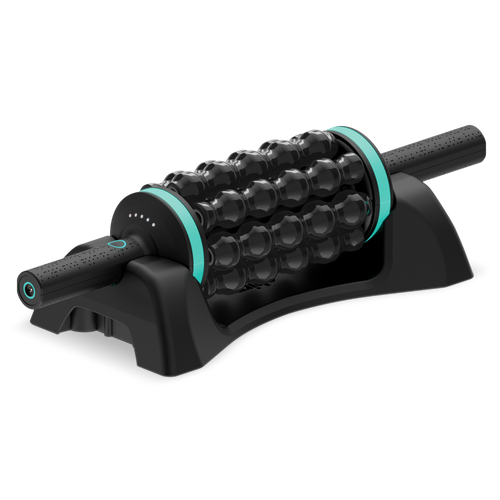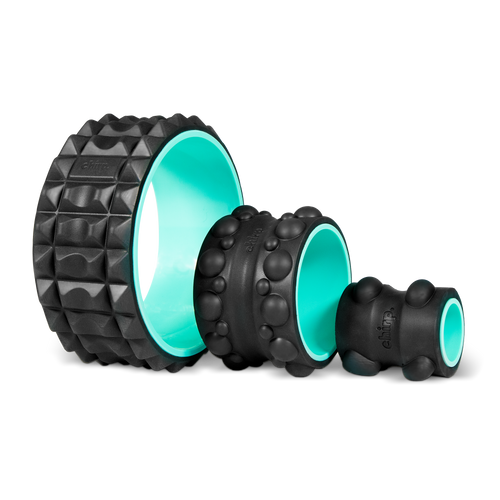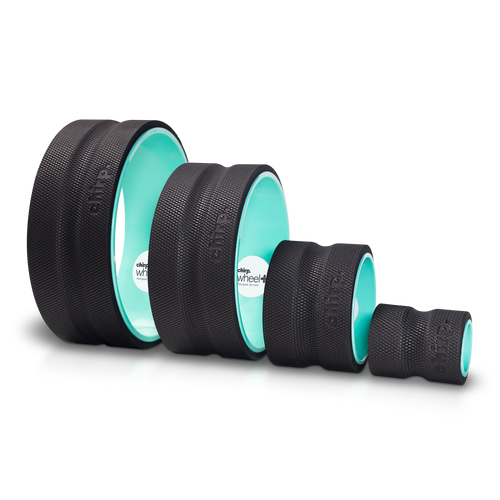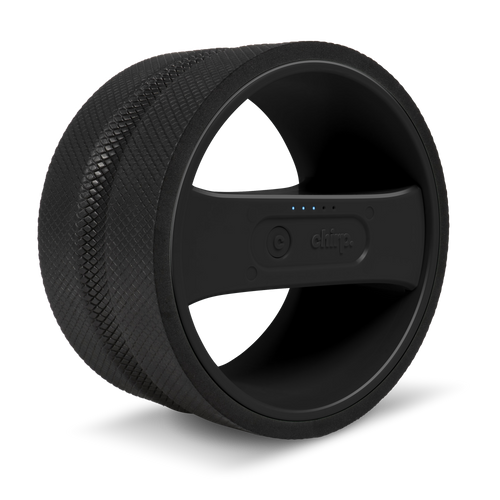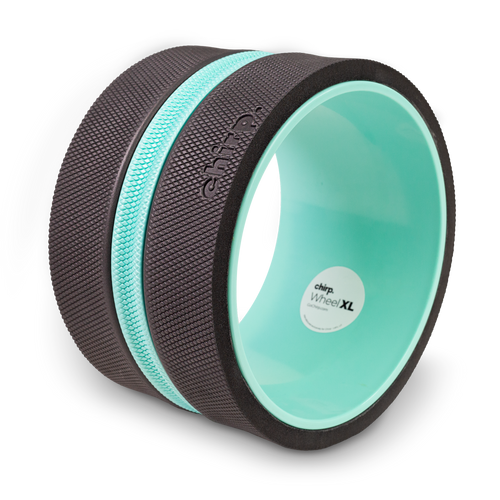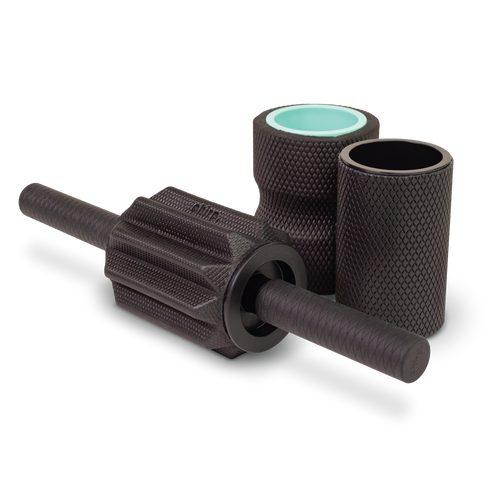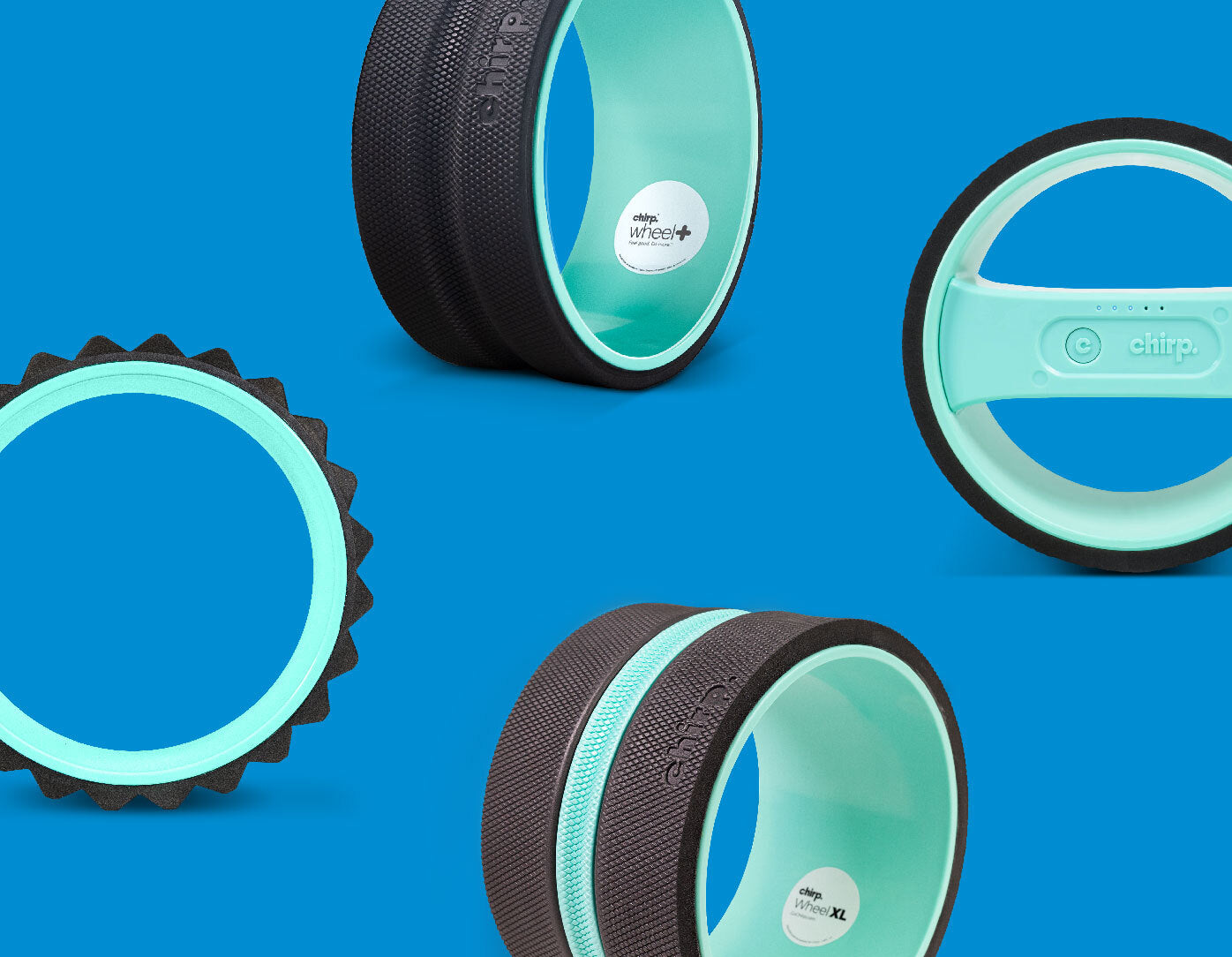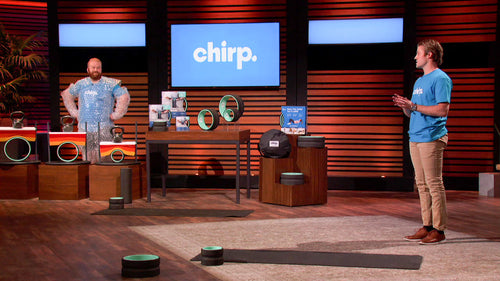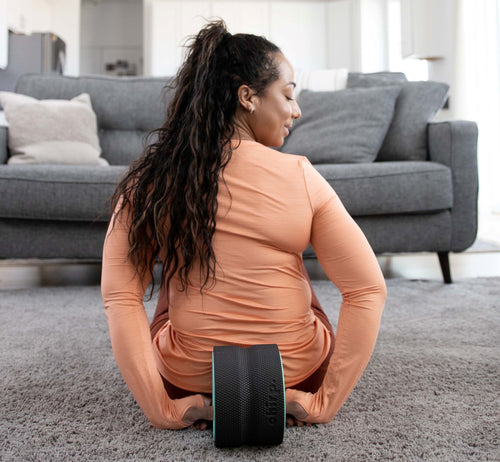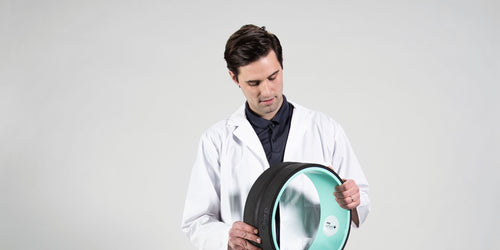Sometimes doing the same workout over and over again can get boring. You can use the Chirp Wheel+ to help keep your workout exciting and challenging. As you use the wheel during your yoga practice, the ergonomic shape of the wheel will help you strengthen your core as you search for balance. It will also provide you with a deeper stretch and enhanced flexibility during many of your yoga poses that you couldn’t get otherwise. You can also use the wheel to help you with difficult poses. And as an added bonus, you can use the wheel to help relieve back pain after your workout.
We recommend using the Gentle 12” Chirp Wheel+ for these poses unless stated otherwise. Take your time and utilize your breathing just like during a regular yoga practice as you use the wheel for your workout. Feel free to experiment more with your wheel by doing the yoga poses you love, but in the meantime, here are some yoga poses we love to do with the wheel:
1. Child’s Pose:

Use the wheel to deepen your stretch in the Child’s Pose. Simply place the wheel under your hands and roll it forward as you pull your heart towards the earth.
If you’re new to yoga, here is how to do the Child’s Pose.
- To begin, get on your hands and knees.
- Bend your knees to put your butt to the heels of your feet, and reach your hands forward.
- For the regular pose, let your hands rest on the ground. If you want a deeper stretch, let your hands rest on the top of the Chirp Wheel+.
- Let your body sink into the ground.
2. Resting Pose or Easy Pose

Lean back against the wheel during the Easy Pose for a deep stretch throughout your back.
How to do the Easy pose:
- Sit down on your yoga mat criss-cross applesauce style.
- Place the wheel at the base of your back and lean back.
- If it’s easier on your back, lift your knees up and place your feet on the ground as you lean back.

During the regular pose, place the wheel under your upper back and open your arms outwards, letting them fall to the ground. The wheel helps you open up if you can’t hold yourself up in the regular position by yourself.
How to do the pose:
- Lie on your back with your hands at your sides.
- By supporting yourself with your elbows, lift from your chest so there is an arch in your back, and let your head fall backwards.
- If it is difficult for you to lift yourself up this way, use the wheel for support until you can do it by yourself. You can even gradually strengthen yourself by transitioning from a large wheel to a small wheel until you can comfortably lift your upper body by yourself.

You can use the wheel for support during the Upward-Facing Staff Pose. Place it directly under your upper back. Start with your back on the wheel and gently roll back until your elbows and head touch the ground.
How to do the pose:
- Lie on your back with your knees bent.
- Place your palms on the ground as you go into a backbend, lifting your navel high into the air.
- Gradually shift your weight from your palms to your forearms one arm at a time.
- When you are ready, straighten your legs, lifting yourself up even higher.
- If this pose is too difficult for you, use the wheel as described above as an assist.

Use the wheel in this pose to give your hamstrings an extra stretch by placing the wheel under your front leg.
How to do the pose:
- Kneel on the ground, lifting your shoulders high.
- Bring your right foot forward, keeping it straight. (In the full pose, both legs are straight, but the half pose can help you stretch to be ready for the full pose.)
- Place the wheel under your front ankle for an extended stretch and to help you prepare for the full pose.

Use the wheel under your back foot for an extra stretch in this pose.
How to do the pose:
- Start in Downward-Facing Dog.
- Lunge your right leg forward to the right side of your hands.
- Drop your body down so you rest on your forearms, letting your back knee drop to the ground if necessary.
- For a deeper stretch, place the wheel under your back foot.
References
Pizer, A. (2019, January 19). Give Your Throat and Crown Chakras Some Attention in Fish Pose. Retrieved from https://www.verywellfit.com/fish-pose-matsyasana-3567076
Pizer, A. (2019, February 15). Get a Deep Hamstring Stretch With Pyramid Pose. Retrieved from https://www.verywellfit.com/pyramid-pose-parsvottonasana-3567100
Pizer, A. (2019, March 10). Lizard Pose (Utthan Pristhasana) in Yoga. Retrieved from https://www.verywellfit.com/lizard-pose-utthan-pristhasana-3567096
Williams, L. (2019, September 12). 7 Ways to Use a Yoga Wheel. Retrieved from https://www.verywellfit.com/ways-to-use-a-yoga-wheel-4156830
YJ Editors. (2007, August 28). Upward Facing Two-Foot Staff Pose. Retrieved from https://www.yogajournal.com/poses/upward-facing-two-foot-staff-pose
Yoga with Bird. (2018, April 1). Yoga Wheel for Back Pain. Retrieved from https://www.youtube.com/watch?v=BtvboC29nRg
